Navigation
World’s National Parks and Protected Areas Now 0nLine for Everyone
A new online database that will allow scientists to arm-chair environmentalists monitor the world’s national parks and protected areas was launched on 6 October, 2008, at the 5th World Conservation Congress in Barcelona.
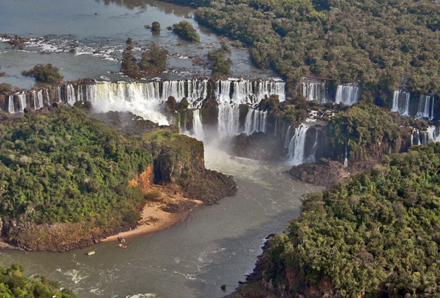 |
A new online database that will allow scientists to arm-chair environmentalists monitor the world’s national parks and protected areas was launched on 6 October, 2008, at the 5th World Conservation Congress in Barcelona. The World Database on Protected Areas is available at: http://www.wdpa.org/
The new product, a partnership between the United Nations Environment Programme’s World Conservation Monitoring Centre (UNEP-WCMC) and the International Union for the Conservation of Nature (IUCN), also allows users to zoom in, fly over and explore over 100,000 sites via Google Earth. The UNEP-WCMC provides objective, scientifically rigorous products and services that include ecosystem assessments, support for implementation of environmental agreements, regional and global biodiversity information, research on threats and impacts, and development of future scenarios for the living world.
 |
The feature may prove as attractive to tourists, planning a visit to a protected area, as it will to researchers studying the globe’s protected land and marine estate.
Because of some of the new features in this system, the University of Maryland was able to develop a new feature that gives early warning of forest fires via e-mail. This should assist rangers to rapidly mobilize fire-fighting operations, reducing the risk of serious damage to one of these economically important nature-based assets.
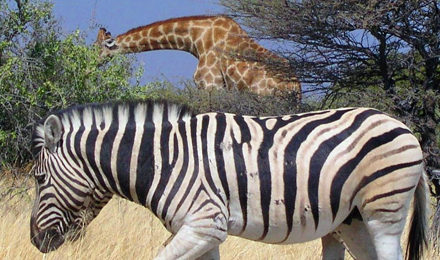 |
Achim Steiner, UN Under-Secretary-General and UNEP Executive Director said: “The information in this new system is at the heart of every decision we make at the nation, regional and global level for conservation.”
“Creating and maintaining national parks and protected areas is one of the most important commitments that nations make towards protecting endangered species, habitats, landscapes and local livelihoods,” he said.
“The information is used as an indicator in the UN’s Millennium Development Goals, under the heading of ‘Ensuring Environmental Sustainability,’ because it is recognized that national parks and protected areas protect more than just nature, they can safeguard against poverty and they are a lasting legacy of human endeavour,” said Mr. Steiner.
 |
“Improved information on protected areas is essential for all involved in protected areas – from on-ground park managers to scientists. IUCN’s World Commission on Protected Areas (WCPA) welcomes the major improvements in the World Database on Protected Areas as a crucial planning and management tool for protected areas,” says Nik Lopoukhine, Chair of WCPA.
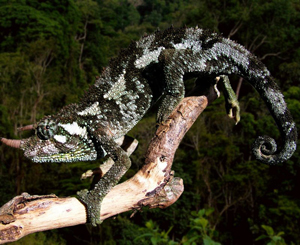 |
This new system allows users to view information on national parks and protected areas in their web browser, to visualise them in Google Earth, to download data, to bring together other important data like species information into the same portal and more.
 |
“At UNEP’s World Conservation Monitoring Centre we are trying to remain in the vanguard of making conservation information readily available to the world,” says Jon Hutton, UNEP-WCMC’s Director.
“We have a long history of compiling information on the state of the world’s biodiversity, and are currently the secretariat of the ‘Conservation Commons,’ an initiative to make conservation information accessible and more open to the world. This new project of making the World Database on Protected Areas more open and accessible is a concrete example of taking the principles of the Conservation Commons and making them real,” he added.
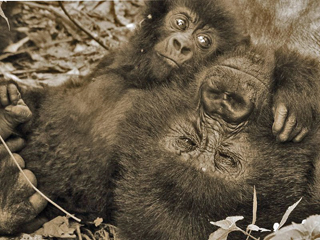 |
Speaking as one of the Proteus Partners, a coalition of oil, gas, mineral and mining and information technology companies who have contributed more than $2 million into this initiative, Liz Rogers, from the energy company BP, made it clear how beneficial this information is to the work they are doing.
“Companies that have the potential to impact nature should invest in information that will ensure they can minimise their impact on nature and thereby lower their risk profile,” Dr. Rogers said. “Linking the information systems of the oil companies with those of conservation organizations so that we can avoid or minimise damage to protected areas and sensitive environments makes sense not only from an ethical perspective, but also from an economic one,” she said.
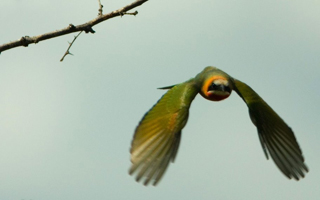 |
Charles Besançon, Head of the Protected Areas Programme at UNEP-WCMC, sums it up like this: “A fundamental challenge for everyone involved with conservation is access to information. From the rangers working on the ground, to the planning of new projects by the biggest corporations and environmental bodies, critical information made more accessible allows us to be much more proactive instead of reactive as we face the environmental challenges ahead.”
He said some of the features of special interest to park rangers in the Fire Information for Resource Management System (FIRMS) e-mail-warning system were possible because of the high quality and the availability of national parks and protected areas data. The FIRMS system is a partnership led by the University of Maryland and includes NASA, the UN’s Food and
Agricultural Organization (FAO) and Conservation International.
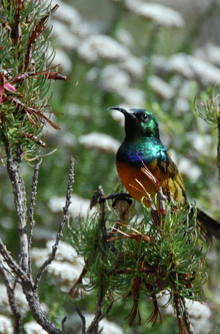 |
“This is really just the tip of the iceberg about the types of monitoring that are possible with these technologies that allow the linking of real-time satellite data with protected areas boundaries,” said Mr. Besancon.
The World Database on Protected Areas is a global database freely available for conservation purposes which provides information on protected areas world-wide. With a mandate from the United Nations, managed at UNEP-WCMC in collaboration with IUCN’s World Commission on Protected Areas, it is a critical tool in monitoring progress in the development and coverage of
protected areas world-wide. For more information visit http://www.wdpa.org
IUCN, the International Union for the Conservation of Nature, is the world’s oldest and largest global environmental network - a democratic membership union with more than 1,000 government and NGO member organizations, and almost 11,000 volunteer scientists in more than 160 countries. WCPA, the World Commission on Protected Areas, promotes the
establishment and effective management of a worldwide representative network of terrestrial and marine protected areas.
Contacts:
Nick Nuttall, UNEP Spokesperson/Head of Media
Or
Charles Besançon, UNEP/WCMC
charles.besancon@unep-wcmc.org
All Photos by Charles Besançon
Notes:
"Since 1981 what is now UNEP-WCMC has been managing the only global database on the world's national parks and reserves, working in close collaboration with IUCN and its World Commission on Protected Areas. This database has now been completely redesigned, and was relaunched on Monday 6th October at the World Conservation Congress in Barcelona." Quote from http://www.unep-wcmc.org/.
Horizon International tried the new Database and chose to go to the Mare aux Hippopotames in Burkina Faso which it found at http://www.wdpa.org/siteSheet.aspx?sitecode=28581. This is a location Horizon filmed in 1996 for a TV program on Burkina Faso for UNFPA(available in low-resolution at http://www.horizoninternationaltv.org/).
Search
Latest articles
Agriculture
- World Water Week: Healthy ecosystems essential to human health: from coronavirus to malnutrition Online session Wednesday 24 August 17:00-18:20
- World Water Week: Healthy ecosystems essential to human health: from coronavirus to malnutrition Online session Wednesday 24 August 17:00-18:20
Air Pollution
- "Water and Sanitation-Related Diseases and the Changing Environment: Challenges, Interventions, and Preventive Measures" Volume 2 Is Now Available
- Global Innovation Exchange Co-Created by Horizon International, USAID, Bill and Melinda Gates Foundation and Others
Biodiversity
- It is time for international mobilization against climate change
- World Water Week: Healthy ecosystems essential to human health: from coronavirus to malnutrition Online session Wednesday 24 August 17:00-18:20
Desertification
- World Water Week: Healthy ecosystems essential to human health: from coronavirus to malnutrition Online session Wednesday 24 August 17:00-18:20
- UN Food Systems Summit Receives Over 1,200 Ideas to Help Meet Sustainable Development Goals
Endangered Species
- Mangrove Action Project Collaborates to Restore and Preserve Mangrove Ecosystems
- Coral Research in Palau offers a “Glimmer of Hope”
Energy
- Global Innovation Exchange Co-Created by Horizon International, USAID, Bill and Melinda Gates Foundation and Others
- Wildlife Preservation in Southeast Nova Scotia
Exhibits
- Global Innovation Exchange Co-Created by Horizon International, USAID, Bill and Melinda Gates Foundation and Others
- Coral Reefs
Forests
- NASA Satellites Reveal Major Shifts in Global Freshwater Updated June 2020
- Global Innovation Exchange Co-Created by Horizon International, USAID, Bill and Melinda Gates Foundation and Others
Global Climate Change
- It is time for international mobilization against climate change
- It is time for international mobilization against climate change
Global Health
- World Water Week: Healthy ecosystems essential to human health: from coronavirus to malnutrition Online session Wednesday 24 August 17:00-18:20
- More than 400 schoolgirls, family and teachers rescued from Afghanistan by small coalition
Industry
- "Water and Sanitation-Related Diseases and the Changing Environment: Challenges, Interventions, and Preventive Measures" Volume 2 Is Now Available
- Global Innovation Exchange Co-Created by Horizon International, USAID, Bill and Melinda Gates Foundation and Others
Natural Disaster Relief
- STOP ATTACKS ON HEALTH CARE IN UKRAINE
- Global Innovation Exchange Co-Created by Horizon International, USAID, Bill and Melinda Gates Foundation and Others
News and Special Reports
- World Water Week: Healthy ecosystems essential to human health: from coronavirus to malnutrition Online session Wednesday 24 August 17:00-18:20
- STOP ATTACKS ON HEALTH CARE IN UKRAINE
Oceans, Coral Reefs
- World Water Week: Healthy ecosystems essential to human health: from coronavirus to malnutrition Online session Wednesday 24 August 17:00-18:20
- Mangrove Action Project Collaborates to Restore and Preserve Mangrove Ecosystems
Pollution
- Zakaria Ouedraogo of Burkina Faso Produces Film “Nzoue Fiyen: Water Not Drinkable”
- "Water and Sanitation-Related Diseases and the Changing Environment: Challenges, Interventions, and Preventive Measures" Volume 2 Is Now Available
Population
- "Water and Sanitation-Related Diseases and the Changing Environment: Challenges, Interventions, and Preventive Measures" Volume 2 Is Now Available
- "Water and Sanitation-Related Diseases and the Changing Environment: Challenges, Interventions, and Preventive Measures" Volume 2 Is Now Available
Public Health
- Honouring the visionary behind India’s sanitation revolution
- Honouring the visionary behind India’s sanitation revolution
Rivers
- World Water Week: Healthy ecosystems essential to human health: from coronavirus to malnutrition Online session Wednesday 24 August 17:00-18:20
- Mangrove Action Project Collaborates to Restore and Preserve Mangrove Ecosystems
Sanitation
- Honouring the visionary behind India’s sanitation revolution
- Honouring the visionary behind India’s sanitation revolution
Toxic Chemicals
- "Water and Sanitation-Related Diseases and the Changing Environment: Challenges, Interventions, and Preventive Measures" Volume 2 Is Now Available
- Actions to Prevent Polluted Drinking Water in the United States
Transportation
- "Water and Sanitation-Related Diseases and the Changing Environment: Challenges, Interventions, and Preventive Measures" Volume 2 Is Now Available
- Urbanization Provides Opportunities for Transition to a Green Economy, Says New Report
Waste Management
- Honouring the visionary behind India’s sanitation revolution
- Honouring the visionary behind India’s sanitation revolution
Water
- Honouring the visionary behind India’s sanitation revolution
- Honouring the visionary behind India’s sanitation revolution
Water and Sanitation
- Honouring the visionary behind India’s sanitation revolution
- Honouring the visionary behind India’s sanitation revolution

